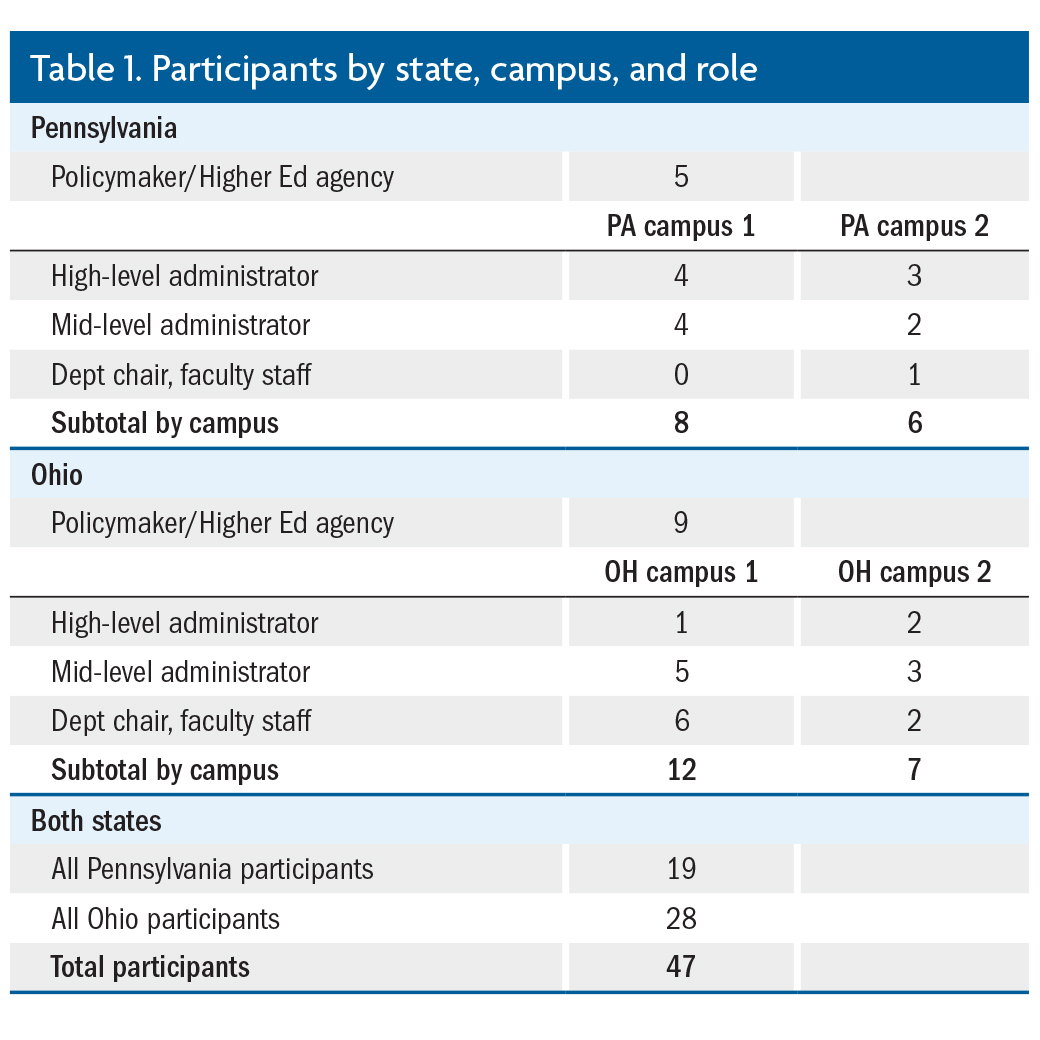Performance funding applies financial incentives to higher education, tying a portion of public institutions’ state appropriations to retention rate, degree completion and other student outcomes.
Summary
As of January 2016, 30 states were operating or developing a performance funding policy to encourage public colleges and universities to find ways to increase student retention, including graduation rates of underrepresented populations. To examine the effect of these performance funding policies, the authors of this study conducted interviews with state-level policymakers and officials at four universities in Pennsylvania and Ohio, two states that have long histories of performance funding and that have recently redesigned their policies.
Key Insights
- Strong faculty unions in Pennsylvania restrict campus budget flexibility and prompt campus administrators to create special incentives for faculty to take targeted actions to boost student retention.
- Also in Pennsylvania, both system and campus officials report difficulties in providing performance data in a timely way for optimal budget planning.
- In both Ohio and Pennsylvania, campuses respond to performance metrics, particularly for underrepresented student populations, with efforts and plans to incorporate more centralized data analytics to track and improve student progress.
- Policymakers and administrators in both states tend to portray higher education as a business enterprise, recognizing that revenue generation is necessary to operate in an environment with declining or stagnant funding from traditional sources.



